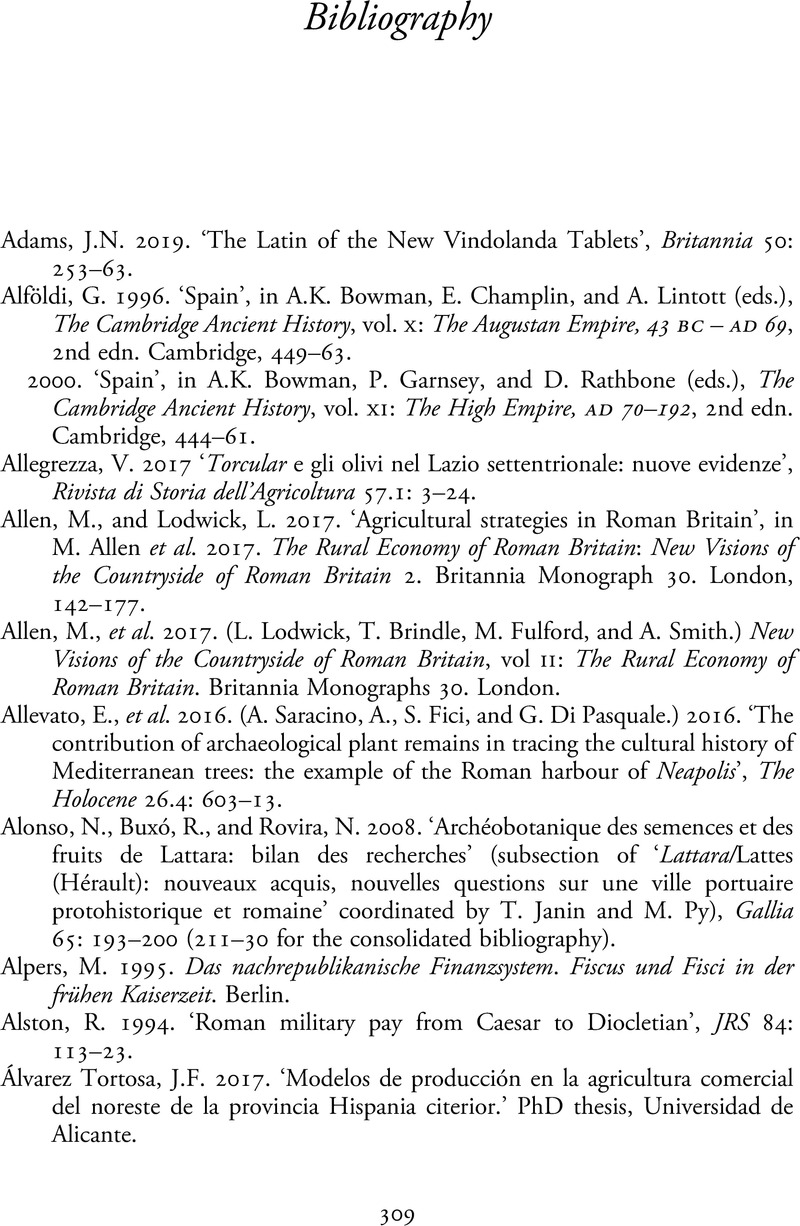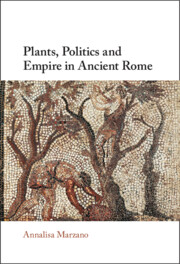Book contents
- Plants, Politics and Empire in Ancient Rome
- Plants, Politics and Empire in Ancient Rome
- Copyright page
- Dedication
- Contents
- Figures
- Tables
- Acknowledgments
- Abbreviations
- Introduction
- Chapter 1 Roman Gardens, Representation, and Politics
- Chapter 2 Arboriculture, ‘Botanical Imperialism’, and Plants on the Move
- Chapter 3 The Augustan ‘Horticultural Revolution’
- Chapter 4 Grafting Glory
- Chapter 5 Of Peaches and Peach Trees
- Chapter 6 Campania and Cisalpine Gaul:
- Chapter 7 Plant Dispersal and Provincial Agriculture
- Chapter 8 Viticulture versus Arboriculture
- Conclusions
- Bibliography
- Index
- References
Bibliography
Published online by Cambridge University Press: 06 October 2022
- Plants, Politics and Empire in Ancient Rome
- Plants, Politics and Empire in Ancient Rome
- Copyright page
- Dedication
- Contents
- Figures
- Tables
- Acknowledgments
- Abbreviations
- Introduction
- Chapter 1 Roman Gardens, Representation, and Politics
- Chapter 2 Arboriculture, ‘Botanical Imperialism’, and Plants on the Move
- Chapter 3 The Augustan ‘Horticultural Revolution’
- Chapter 4 Grafting Glory
- Chapter 5 Of Peaches and Peach Trees
- Chapter 6 Campania and Cisalpine Gaul:
- Chapter 7 Plant Dispersal and Provincial Agriculture
- Chapter 8 Viticulture versus Arboriculture
- Conclusions
- Bibliography
- Index
- References
Summary

- Type
- Chapter
- Information
- Plants, Politics and Empire in Ancient Rome , pp. 309 - 343Publisher: Cambridge University PressPrint publication year: 2022



